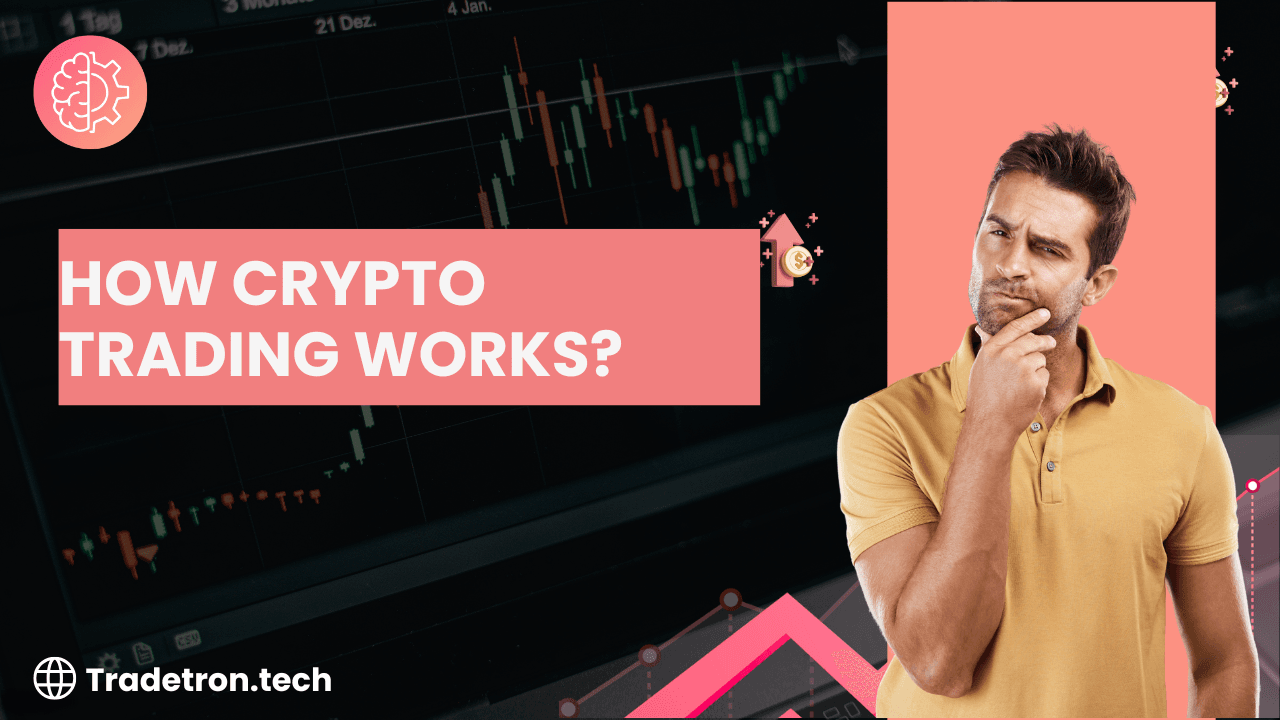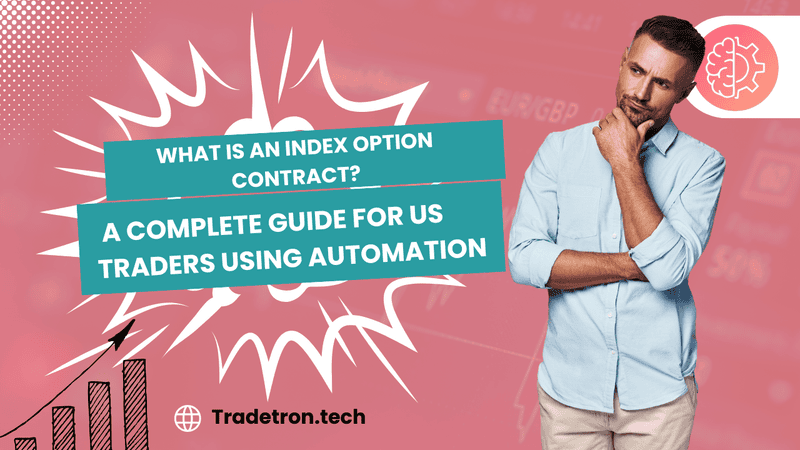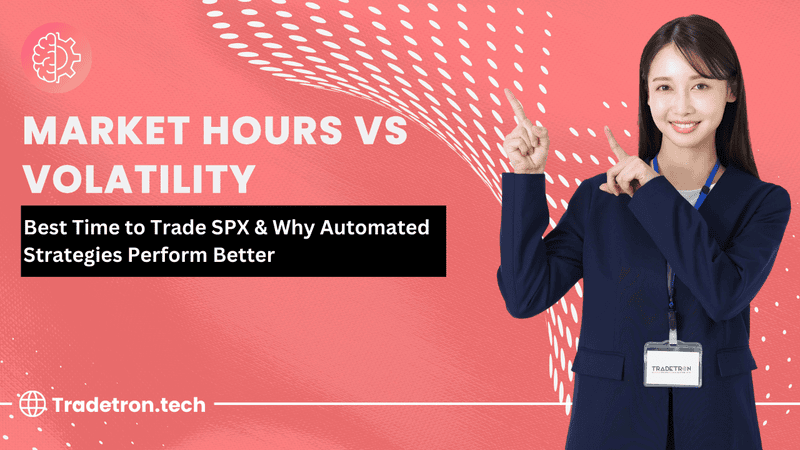Cryptocurrency trading has emerged as one of the most dynamic and potentially lucrative financial markets of the 21st century. Unlike traditional financial markets, crypto trading operates in a decentralized, 24/7 environment that never sleeps. Understanding how crypto trading works is essential for anyone looking to participate in this revolutionary market, and platforms like Tradetron are making sophisticated crypto trading strategies accessible to traders worldwide.

The Basics of Cryptocurrency Trading
At its core, crypto trading involves buying and selling digital assets like Bitcoin, Ethereum, and thousands of other cryptocurrencies. The fundamental principle remains similar to traditional trading: purchase an asset at a lower price and sell it at a higher price to generate profit. However, crypto markets operate very differently from traditional stock or forex markets.
Cryptocurrencies are traded on digital exchanges that operate continuously, without the market closures that characterize traditional financial markets. This 24/7 operation creates unique opportunities but also requires different approaches to risk management and strategy execution.
How Cryptocurrency Markets Function
Decentralized Nature
Unlike traditional markets with centralized exchanges, crypto trading occurs across numerous exchanges worldwide. Each exchange operates independently, creating price differences and arbitrage opportunities between platforms. This decentralized structure means that prices can vary between exchanges, sometimes significantly.
Order Book Mechanics
Crypto exchanges use order books to match buyers and sellers. When you place a buy order, it gets matched with a sell order at the agreed price. The continuous interaction between buy and sell orders determines the current market price of each cryptocurrency.
Market Makers and Liquidity
Liquidity in crypto markets comes from market makers - traders who continuously place buy and sell orders to facilitate trading. Higher liquidity generally means better prices and faster execution, while low liquidity can lead to significant price slippage.
Types of Crypto Trading
Spot Trading
Spot trading involves buying and selling cryptocurrencies for immediate delivery. This is the most straightforward form of crypto trading, where you own the actual cryptocurrency after purchase.
Futures Trading
Crypto futures allow traders to speculate on future prices without owning the underlying asset. These contracts can be used for hedging or leveraged speculation, amplifying both potential profits and losses.
Margin Trading
Margin trading enables traders to borrow funds to increase their position size, potentially amplifying returns. However, this also increases risk, as losses are magnified alongside gains.
Derivatives Trading
Advanced traders use various derivative instruments like options, swaps, and perpetual contracts to implement sophisticated strategies and hedge existing positions.
How Tradetron Revolutionizes Crypto Trading
While understanding crypto trading mechanics is important, executing profitable strategies consistently requires sophisticated tools and automation. Tradetron transforms how traders approach cryptocurrency markets through its comprehensive automation platform.
1. Automated Strategy Execution
Crypto markets never sleep, creating opportunities at all hours. Tradetron's automated systems monitor markets continuously, executing trades based on predefined criteria without requiring constant manual oversight. This 24/7 capability is crucial for crypto trading success.
2. Multi-Exchange Integration
Different exchanges offer varying liquidity, fees, and available cryptocurrencies. Tradetron integrates with multiple exchanges simultaneously, allowing traders to access the best prices and opportunities across different platforms while maintaining unified risk management.
3. Advanced Technical Analysis
The platform incorporates sophisticated technical analysis tools calibrated for crypto market dynamics. From traditional indicators adapted for high-volatility environments to crypto-specific metrics, Tradetron provides comprehensive market analysis capabilities.
4. Risk Management for Volatile Markets
Cryptocurrency volatility can be extreme, with double-digit percentage moves common in single sessions. Tradetron implements dynamic position sizing, volatility-adjusted stop losses, and correlation-based exposure limits specifically designed for crypto market conditions.
5. Arbitrage and Cross-Exchange Trading
Price differences between exchanges create arbitrage opportunities that are impossible to capture manually. Tradetron automatically identifies and executes these trades, generating profits from temporary price inefficiencies.
Popular Crypto Trading Strategies
Dollar-Cost Averaging (DCA)
This strategy involves making regular purchases regardless of price, reducing the impact of volatility over time. Tradetron can automate DCA strategies with sophisticated timing and amount adjustments.
Grid Trading
Grid strategies place multiple buy and sell orders at different price levels, profiting from price oscillations. These strategies work particularly well in ranging markets and can be fully automated through Tradetron.
Trend Following
Crypto markets often exhibit strong trending behavior. Automated trend-following strategies can capitalize on sustained price movements while managing risks associated with trend reversals.
Mean Reversion
During consolidation periods, cryptocurrencies often revert to average prices. Tradetron can identify and exploit these opportunities across multiple timeframes and currency pairs.
Risk Management in Crypto Trading
Cryptocurrency trading involves significant risks including extreme volatility, regulatory uncertainty, technological risks, and market manipulation. Successful crypto trading requires robust risk management strategies that account for these unique challenges.
Tradetron addresses these risks through comprehensive monitoring systems, automated risk controls, and sophisticated backtesting capabilities that help traders understand potential outcomes before committing capital.
The Role of Emotions in Crypto Trading
One of the biggest challenges in crypto trading is managing emotions. The extreme volatility and 24/7 nature of crypto markets can lead to impulsive decisions, FOMO (fear of missing out), and panic selling. Automated trading through platforms like Tradetron removes emotional decision-making from the equation, executing strategies based on predetermined logic rather than momentary feelings.
Getting Started with Crypto Trading
Beginning crypto trading involves several steps: educating yourself about blockchain technology and market dynamics, choosing appropriate exchanges, implementing proper security measures, and developing a trading strategy. Platforms like Tradetron simplify this process by providing educational resources, strategy templates, and automated execution capabilities.
Frequently Asked Questions
1. How does crypto trading differ from traditional stock trading?
Crypto trading operates 24/7 across decentralized exchanges with higher volatility and no circuit breakers. Unlike stocks, cryptocurrencies aren't backed by companies or assets, and regulatory frameworks vary globally. Tradetron addresses these differences by providing specialized tools for crypto market dynamics including continuous monitoring and volatility-adjusted risk management.
2. What makes cryptocurrency prices move up and down?
Crypto prices are influenced by supply and demand dynamics, regulatory news, technological developments, institutional adoption, market sentiment, and macroeconomic factors. Unlike traditional assets, crypto markets are highly sensitive to social media sentiment and can experience rapid price movements based on news or influential figures' statements.
3. How can beginners safely start crypto trading?
Beginners should start with education, use only risk capital they can afford to lose, begin with small positions, and implement proper risk management. Tradetron provides a safe learning environment through paper trading, pre-built strategies, and comprehensive risk controls that help beginners learn while protecting their capital.
4. What are the main risks involved in cryptocurrency trading?
Key risks include extreme price volatility, regulatory uncertainty, exchange security breaches, technological failures, market manipulation, and liquidity risks. Tradetron helps mitigate these risks through diversified exchange integration, automated risk controls, and continuous monitoring systems.
5. How does automated crypto trading work on platforms like Tradetron?
Automated crypto trading uses algorithms to execute trades based on predefined conditions without human intervention. Tradetron allows users to create strategies using visual tools, backtest them against historical data, and deploy them across multiple exchanges. The platform monitors markets continuously and executes trades when strategy conditions are met, removing emotional decision-making and enabling 24/7 market participation.
Understanding how crypto trading works is the first step toward participating in this revolutionary market. With the right tools and platforms like Tradetron, traders can navigate the complexities of cryptocurrency markets more effectively, implementing sophisticated strategies while managing the inherent risks of digital asset trading. Whether you're a beginner exploring crypto for the first time or an experienced trader looking to optimize your approach, automated trading platforms provide the technology needed for crypto trading success.



 Made with Superblog
Made with Superblog